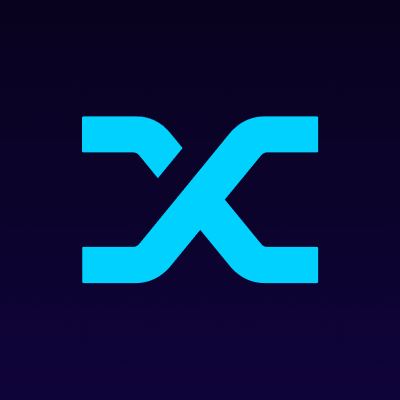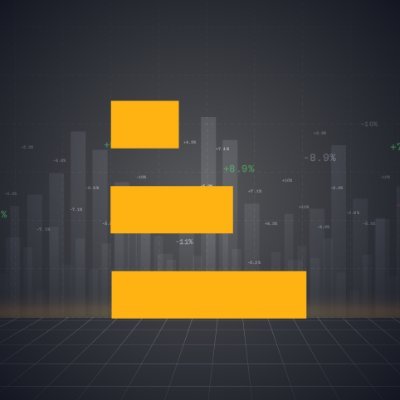Data Insights: Comparison of 6 Key Metrics of On-Chain Derivatives Protocols
Author: Analyst at Alphabeth Capital
Compiled by: Jordan, PANews
The on-chain derivatives space is the most competitive area in DeFi, with dozens of protocols already launched and many new projects on the way. This article will focus on analyzing the key metrics comparison of six major on-chain derivatives protocols.
While raw data may suggest that a particular protocol looks like a good investment, understanding the background remains very important, especially regarding the protocol design and revenue-sharing model.

(Note: The data in the table was captured on July 24, 2023)
1. GMX
GMX is a perpetual synthetic decentralized exchange, known for its zero slippage trading feature. In terms of locked value, trading volume, fees, and revenue, GMX is currently the largest derivatives protocol. They share 70% of the fee revenue with liquidity providers and 30% with GMX stakers, making GMX very popular and attractive to investors. Its price-to-earnings ratio (earnings minus token incentives) is 31.16, which means GMX is "relatively expensive," but investors may be pricing it based on GMX v2, which will be launched in a few weeks with the following features:
- Chainlink low-latency oracles for better real-time market data
- Support for more assets (not just cryptocurrencies)
- Lower trading fees
- Slippage will coexist between GMX v1 and v2
As competition intensifies, GMX's market share is gradually decreasing. If v2 does not bring more trading volume and fees to the platform, GMX's reasonable price may fall to the $40 range, with a price-to-earnings ratio of about 20.

2. Synthetix
Synthetix allows users to mint synthetic assets based on its native token SNX. Other projects (such as Kwenta) can build their own front ends using Synthetix to allow traders to access perpetual DEX trading. In terms of market capitalization and revenue, Synthetix is the largest among the six derivatives protocols, distributing 100% of fee revenue to SNX token stakers, who are also liquidity providers.
To incentivize users to provide liquidity, Synthetix unlocks SNX tokens to reward stakers. Currently, over $100 million worth of SNX has been paid as incentives to stakers, but the protocol only has $36 million in fee revenue and a negative price-to-earnings ratio—indicating that they are operating at a loss.

Given the current valuation, fees, and token release volume, SNX appears to be a very expensive token. Without additional incentives, future trading volumes may decline.
3. Gain Network
Gain Network is a comprehensive derivatives platform that allows leveraged trading of cryptocurrencies, forex, and commodities. The platform currently shares about 33% of fee revenue with GNS token stakers and about 17% with liquidity providers. However, starting in September, the share of fee revenue allocated to GNS token stakers will increase to 61%, which may enhance its valuation.
Gains Network has the lowest price-to-earnings ratio among the six derivatives protocols, at only 10, with a price-to-revenue ratio of 8.7. However, the trading volume to locked value ratio is relatively high at 568 without incentives. From the perspective of key metrics, product development, and future updates, GNS may be an undervalued project.

4. Perpetual Protocol
Perpetual Protocol is built on Uniswap v3 smart contracts, currently allocating 80% of its fee revenue to liquidity providers and about 14% to PERP token stakers. Perpetual Protocol has an annual revenue of $1.4 million, while the value of unlocked tokens is $2.8 million, indicating a negative annual yield. Overall, Perpetual Protocol does not seem attractive to investors and struggles to compete with Kwenta (Synthetix) on Optimism.

5. Level Finance
Level Finance gained significant market attention early on due to extensive trading incentives using the LVL token. Currently, the trading volume of the Level Finance protocol remains at billions of dollars, but due to the decline in token issuance and price, some key metrics are on a downward trend.
Considering that Level Finance has a design similar to GMX, a trading volume to locked value ratio of 1000 seems a bit high (possibly due to artificial factors). It is worth noting that although Level Finance generates substantial fee revenue, its earnings are negative—indicating that the protocol distributes more tokens than it generates in fees.

Level Finance allocates 45% of fee revenue to liquidity providers, 10% to LVL token stakers, and 10% to LGO stakers (Note: LGO is the second token launched in the Level ecosystem, with governance and financial rights). Some key metrics of Level, such as trading volume, seem inflated due to the early incentive phase, but its negative earnings suggest it may not be an attractive investment choice.

6. MUX Protocol
MUX Protocol is both a trading protocol and an aggregator, distributing 70% of fee revenue to liquidity providers who provide ETH and MUX token stakers. Since MUX is deployed across multiple widely adopted ecosystems, such as perpetual trading platforms, options platforms, and betting platforms, it has a diverse range of protocol combinations. MUX Protocol has a low market capitalization but performs well in scalability and reliability, making MUX an "interesting" investment opportunity.

Conclusion
The competition among on-chain derivatives protocols is intensifying, making it difficult to identify the most promising protocols and predict which ones will succeed over time. This article does not constitute any financial advice.
















